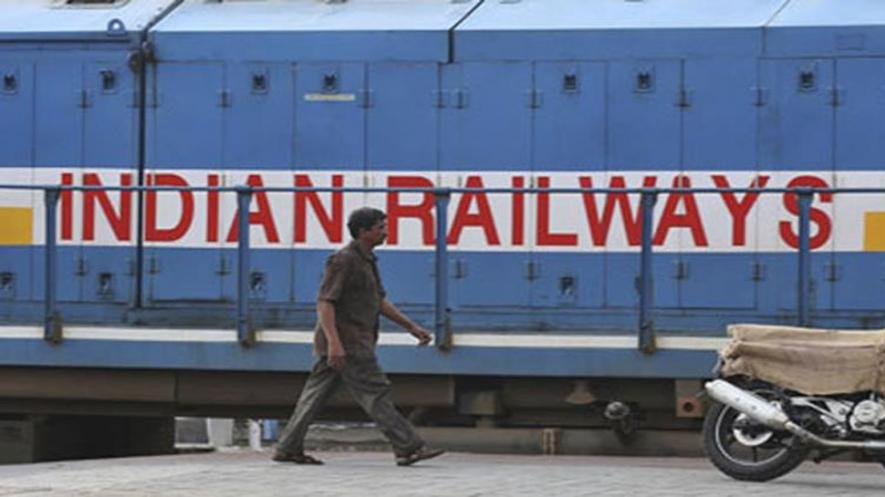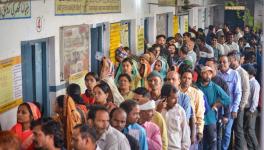Rail Budget: Comprehensive Reforms Are Need of the Hour

Image Courtesy: Zee News
New Delhi, Jul 3: Amid the slowdown of the economy, Finance Minister Nirmala Sitharaman is expected to announce the government's plan for growth and development of the country in the General Budget. Her maiden Budget is being eagerly looked forward to by all and sundry including over two million passengers who use trains daily as a mode of transport.
Indian Railways is perceived to be the lifeline of a common man. Even though it has been losing its modal share in number of passengers and freight business over the years, it is still the cheapest mode of transportation as compared to the road and the airlines. Sitharaman has a crucial role to play in earmarking adequate fund for its survival through capacity augmentation and technology upgradation.
Facing a loss of about Rs 42,000 crore in passenger segment, the fourth largest rail network in the world needs an overhaul to prevent its further sliding and also from going the Air India way, a challenging task at hand. Land monetisation and station redevelopment are some of the key components which railways need to include in its commercial plan to improve revenues. However, fare hike looks unlikely and Sitharaman is expected to emphasise strengthening safety measures and passenger amenities.
The need of the hour is introduction of reform-driven agenda in the Rail Budget which has lost much of its sheen and relevance after its merger with the Union Budget way back in 2017-18, as there would be no announcement of new trains and fare revision which was a regular practice in the past.
An allocation of Rs 64,857 crore is expected to be Gross Budgetary Support (GBS) and capital expenditure is estimated to be about Rs 1.58 lakh crore for the current fiscal year in the rail budget.
As it is high time for the upgradation of technology, Railways is likely to have a total of Rs 2,100 crore for replacing overage signalling system and safety enhancement work in the telecom segment in the rail network.
Though Railways has eliminated unmanned level crossings at major broad-gauge routes, incidents of equipment failures and cattle running over continue to take place. Budget should allow focusing more on technology to address the problem by installing flash and alarm technology at level crossings instead of deploying gatekeepers alone. In order to prevent death on the tracks due to trespassing, Railway Protection Force (RPF) personnel are required to be deployed on locations vulnerable for trespassing. Besides erection of boundary wall/fencing at the identified locations, warning sign boards are provided at conspicuous places for the awareness of passengers.
Since earnings have dwindled against the rising expenditure, the Railways has been struggling with payments of about 13 lakh-strong staff plus pension after the implementation of the recommendations of the Seventh Pay Commission. Budget should spell out a plan to increase revenue through various innovative measures in the passenger and goods segments. With earnings lagging and operating ratio (OR) climbing up, setting up of viable commercial goals also assumes importance. The OR is kept at 95% for the current fiscal year in the Budget as against 97.3% last year.
Railways has to spend a big chunk on pensions and staff cost – Rs 50,000 crore and Rs 58,837 crore respectively for the year 2019-20 – while revenue expenditure is estimated to be Rs 2.05 lakh crore.
Construction of new lines is also likely to get a leg-up with Rs 7,255 crore allocations, Rs 2,200 crore for gauge conversion, Rs 700 crore for track doubling in the Budget.
Currently, Railways is in a fix over meeting its rails requirement for track renewal and network expansion as the steel PSU SAIL has not been able to supply the requirement. Railways has a requirement of about 17 lakh tons of rails for track renewal and capacity augmentation in 2019-20. Against this demand, SAIL has committed to supply only 13.5 lakh tons. In the past also, Railways has received less quantity than its requirement. However, Railways is yet to get a green signal from the Ministry of Steel for import of the rail.
Railways would also have 7,650 coaches and 13,700 wagons for the current fiscal year and Rs 6,114.82 crore have been allocated for its rolling stock programme.
Besides safety, there is a dire need for improvement in punctuality, as many trains are running late causing great inconvenience to the passengers, who also are forced to deal with filthy and smelly toilets, poor catering service and overall unhygienic condition of the coaches.
Budget is likely to give an impetus to electrification, as the Railways has set a target of route electrification of about 6,000 km in the current fiscal year. However, despite the rapid route electrification drive and thrust on replacing diesel locos with electric ones, the fuel expenditure of Indian Railways is on the rise, contrary to the claim of saving Rs 4,500 crore a year in its fuel bill. The Railways spent Rs 20,555 crore in the fiscal year 2018-19 in the fuel bill, against Rs 17,831 crore in 2017-18.
The completion of the Dedicated Freight Corridor (DFC) is awaited for decongesting the main trunk route. The completion of Kashmir rail link work, a national project, is another challenging task for the Railways. The Chenab rail bridge, part of the Kashmir rail link project, resumed work recently after months of suspension due to the contractors’ payment issue.
Though manufacturing of the Vande Bharat trains is facing uncertainty at Integral Coach Factory due to the ongoing vigilance probe, railways is keen on introducing the service on other routes including Delhi-Katra sector.
Sitharaman is expected to announce higher infrastructure outlays with some new projects to boost the sentiments of the private investors from domestic and global markets.
Though the double-digit growth trajectory is still elusive, unlike the interim budget, the government – which is back with a massive majority – will not be wooing voters in this Budget, but will try to put the economy back on track.
It goes without saying that public transporter badly needs an overhaul and reconstruction with market-driven reforms to make it vibrant and it is hoped that the Union Budget 2019-20 would pave the way for it.
The writer is a senior journalist and can be contacted at [email protected]
Also read: Chenab Rail Bridge in Limbo Once Again Over Extra Steel Requirement
Get the latest reports & analysis with people's perspective on Protests, movements & deep analytical videos, discussions of the current affairs in your Telegram app. Subscribe to NewsClick's Telegram channel & get Real-Time updates on stories, as they get published on our website.
























